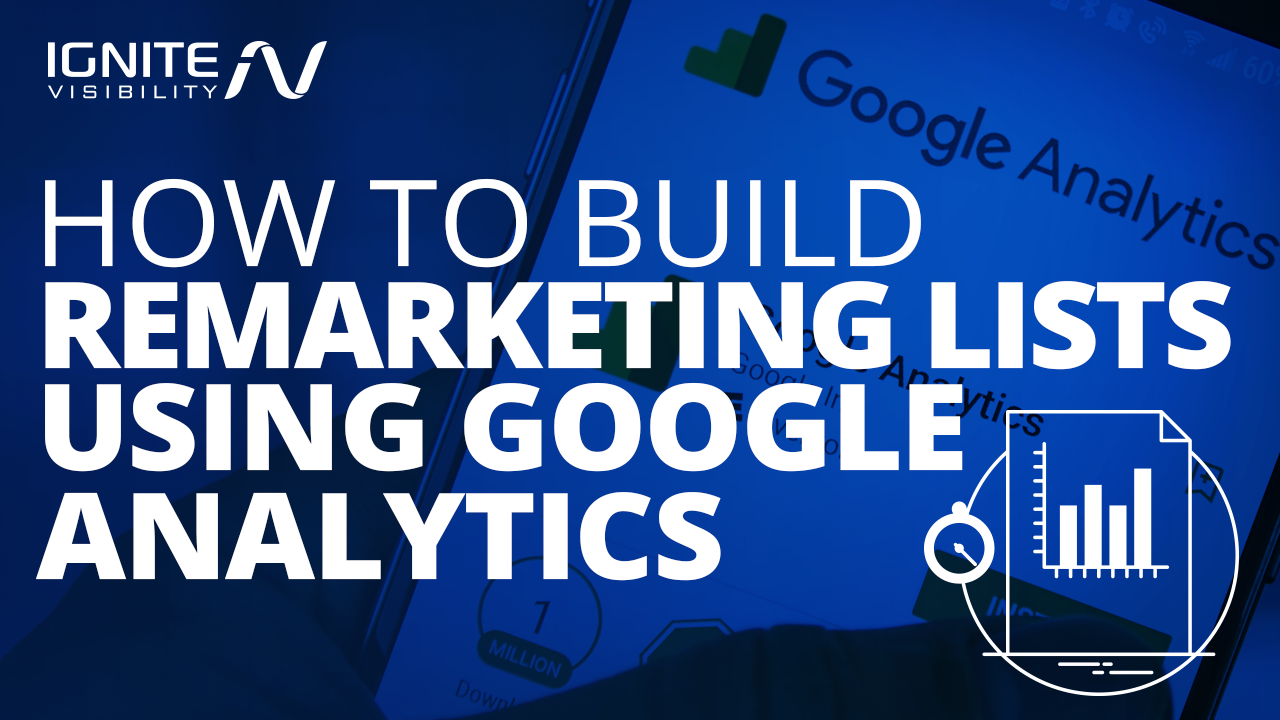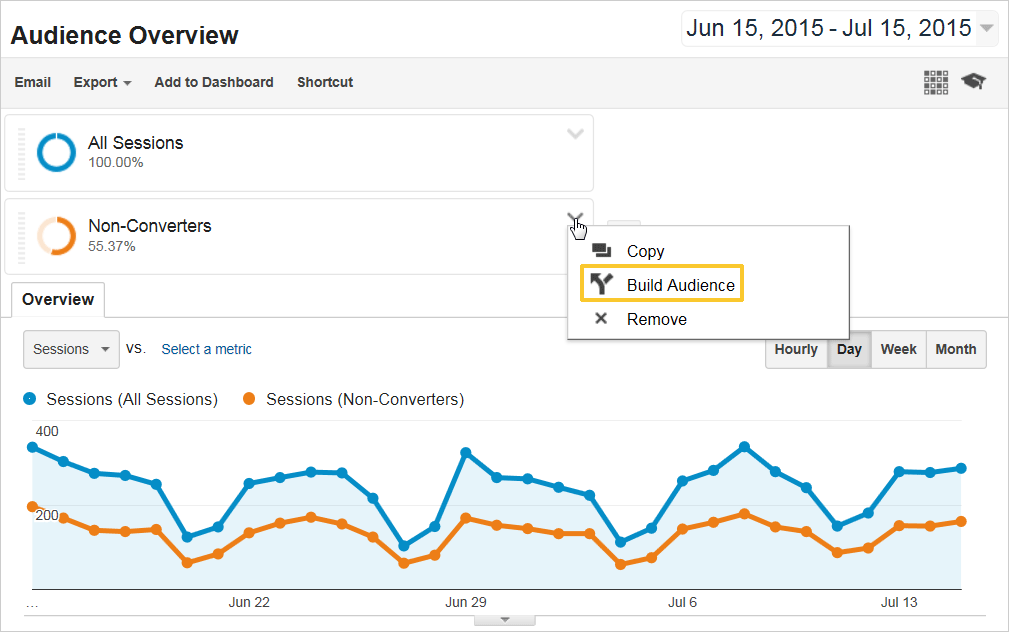Advanced Techniques for Remarketing In Google Analytics
Taking Advantage Of Remarketing in Google Analytics: A Comprehensive Overview
Utilizing remarketing in Google Analytics offers services a tactical side in getting to out to prospective consumers. This overview will certainly shed light on the crucial steps entailed in taking advantage of the full capacity of remarketing in Google Analytics, leading to improved advertising and marketing end results.
Recognizing Remarketing in Google Analytics
Remarketing in Google Analytics permits companies to tactically target customers who have actually previously engaged with their site or mobile application. By leveraging data from Google Analytics, organizations can create tailored remarketing lists based upon individual actions, such as pages checked out, activities taken, or particular objectives achieved. This powerful device makes it possible for services to re-engage with users that have revealed interest in their solutions or products, inevitably boosting the likelihood of conversion.
Recognizing the various sorts of remarketing approaches is important for a successful campaign - What Is “Remarketing” In Google Analytics?. Google Analytics supplies numerous choices, consisting of typical remarketing, dynamic remarketing, and remarketing checklists for search advertisements (RLSA) Each kind serves a special function and can be tailored to satisfy certain advertising and marketing objectives
In addition, assessing the efficiency of remarketing projects is crucial for maximizing outcomes. Google Analytics gives useful understandings right into the efficiency of various remarketing strategies, allowing companies to make data-driven decisions and refine their targeting technique. By continually checking and adjusting remarketing efforts based upon analytics information, services can take full advantage of ROI and drive success in their advertising efforts.
Setting Up Remarketing Projects

After establishing audience checklists, the next action is to link Google Analytics with Google Advertisements. By linking these two platforms, businesses can flawlessly move target market listings from Google Analytics to Google Ads for remarketing objectives. This assimilation enables more exact targeting and better project efficiency.
When the accounts are linked, businesses can develop remarketing projects in Google Ads using the target market notes formerly defined in Google Analytics. These projects can be personalized with details advertisement creatives, messaging, and bidding strategies to properly re-engage with previous visitors and drive conversions. By adhering to these steps, organizations can take advantage of the power of remarketing to enhance their advertising and marketing efforts and boost ROI.
Making Use Of Target Market Segmentation Techniques

Predefined sectors in Google Analytics allow you to rapidly evaluate typical target market categories fresh individuals, returning customers, or customers that completed a particular goal on your web site. Personalized sectors, on the various other hand, allow you to create distinct segments based upon specific criteria that are very important to your business purposes. Dynamic remarketing checklists instantly readjust based upon customer actions, revealing customized advertisements to users that have actually communicated with your website in certain ways.
Analyzing Remarketing Performance Metrics
Upon reviewing the efficiency of remarketing campaigns in Google Analytics, the analysis of vital efficiency metrics gives useful understandings right into audience interaction and conversion rates. By diving right into metrics such as click-through prices (CTR), conversion rates, cost per procurement (CERTIFIED PUBLIC ACCOUNTANT), and return on advertisement spend (ROAS), online marketers can gauge the success my website of their remarketing initiatives. Assessing these metrics allows online marketers to optimize projects, fine-tune audience targeting, and allocate spending plans successfully to enhance general remarketing performance.
Maximizing Remarketing Methods
When refining remarketing techniques in Google Analytics, concentrating on target market segmentation is paramount for attaining campaign success. By dividing your audience into specific segments based upon their actions, demographics, or rate of interests, you can tailor your ads better per team. This targeted approach raises the probability of engaging individuals who have actually already revealed rate of interest in your solutions or items, bring about higher conversion this website prices.
Another critical aspect of enhancing remarketing strategies is continually testing and refining your campaigns (What Is “Remarketing” In Google Analytics?). A/B screening different ad creatives, messaging, or offers can help you recognize what resonates finest with your audience and drives the most conversions. By evaluating the efficiency of these examinations in Google Analytics, you can make data-driven choices to optimize your remarketing efforts additionally
Additionally, leveraging vibrant remarketing can substantially enhance your campaign results. This attribute allows you to reveal personalized ads to customers based upon their past interactions with your site, showcasing solutions or items they have actually formerly watched. By supplying customized web content to users based upon their habits and rate of interests, vibrant remarketing can help enhance interaction and drive conversions.
Verdict
In conclusion, utilizing remarketing in Google Analytics is a calculated strategy to target users who have actually formerly involved with an internet site. By creating personalized audience listings and using target market division approaches, businesses can optimize remarketing advocate raised conversion rates. Examining efficiency metrics and continually maximizing approaches are crucial for optimizing the efficiency of remarketing initiatives.
Google Analytics uses different choices, resource consisting of typical remarketing, dynamic remarketing, and remarketing checklists for search advertisements (RLSA)After setting up target market checklists, the following action is to connect Google Analytics with Google Advertisements. By connecting these 2 platforms, companies can perfectly transfer audience lists from Google Analytics to Google Advertisements for remarketing objectives.As soon as the accounts are connected, companies can create remarketing campaigns in Google Advertisements making use of the target market notes previously defined in Google Analytics.When refining remarketing approaches in Google Analytics, concentrating on target market division is critical for attaining campaign success.